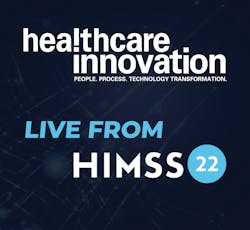A March 16 session at HIMSS22 in Orlando, Fla., titled “Dispelling the Misconceptions Hindering the HIE [health information exchange] Evolution,” did just as the title indicated. The speakers for this session were Joe Kachelski, CEO of Wisconsin Statewide Health Information Network (WISHIN)—an independent not-for-profit organization dedicated to bringing the benefits of widespread, secure, interoperable health information technology to patients and caregivers throughout Wisconsin; and Renee Towne, vice president of population health at Lincoln, Neb.-based analytics company, KPI Ninja.
The speakers said they would be addressing five myths surrounding HIE evolution. “The first myth is HIEs are only data brokers,” Towne said. She explained that one key theme that has emerged is that leading HIEs do a few things differently, including knowing what success looks like. She added that “They [HIEs] know how good is defined.” The other things leading HIEs do differently are that they orient their work to their vision, they convey unique value, and they innovate, validate, and iterate.
The second myth was that “the traditional infrastructure works.” Towne explained that the traditional infrastructure flows data in, data ingestion, processing, clinical data repository, provider portal, and data out flows toward the other sections in the traditional infrastructure. Towne said “If HIEs are to serve more than a singular purpose their architecture needs to support ever-evolving needs.” Some strategies for a redefined infrastructure include a unified data model, data quality, and the experience (data delivery).
Kachelski then brought up the third myth, “data quality needs to be perfect.” “My advice would be to not let the perfect be the enemy of the good, some data is better than none,” he said. He also said that it is important to let the customer define value. Some strategies to value creation include data assessment, data quality improvement, and ongoing monitoring.
Towne then brought up, as an example of data assessment, USCDI [United States Core Data for Interoperability] V2 as a framework. “It is constantly evolving,” she said. The data assessment includes profiling, parsing, standardization, cleaning, matching, and enrichment. The Office of the National Coordinator for Health Information Technology (ONC) is currently accepting feedback on USCDI V3 until April.
Kachelski then addressed data improvement. “Let go of assumptions and let them [customers] tell us, and each other, what’s important to them right now.” He also mentioned stakeholder feedback, an educational approach, and incentives to change.
The fourth myth, brought up by Kachelski, was “innovation is a bridge too far.” “Government can be a source of venture capital; it was in our case” he said. “With the COVID-19 outbreak in 2020, the department of public health recognized early on that the data they routinely collect from providers was insufficient for decision they would have to make about managing the pandemic. They came to us and we were able to supplement the mandatory data collected with additional data.”
The fifth, and last myth, was “Evolution is an individual pursuit.” “There is market expertise everywhere in organizations across the country,” Kalchelski commented. “While there are some differences, the core values we can deliver are the same across the country. Although everyone is in different places in terms of evolution, we [WISHIN] don’t have shame or too much pride to talk to colleagues who confront the same issues we are dealing with.”
The outcomes of HIE evolution, according to Towne who concluded the presentation, are financial stability, project prioritization, stakeholder engagement, and organizational positioning. “Proven innovation and approaches, exist,” she said.


